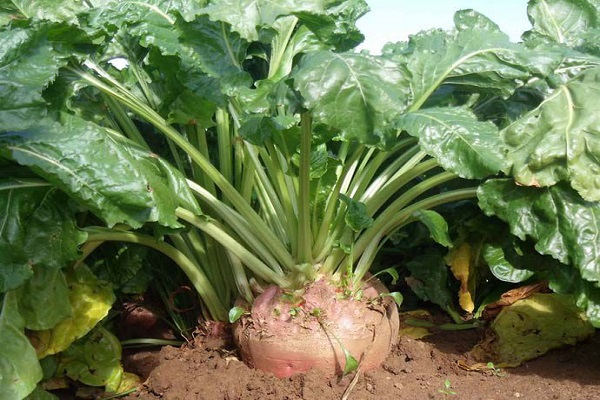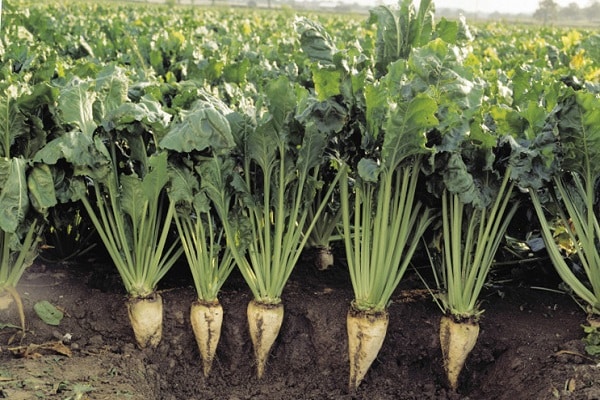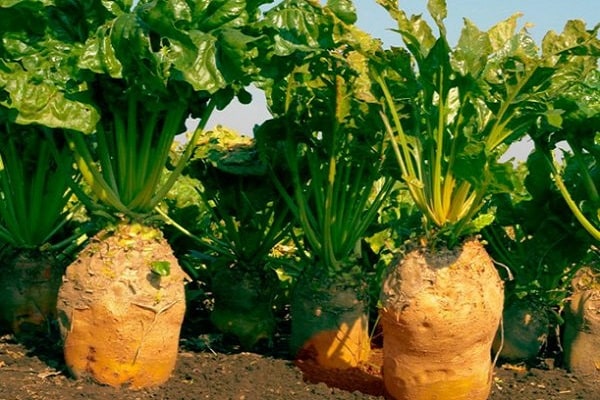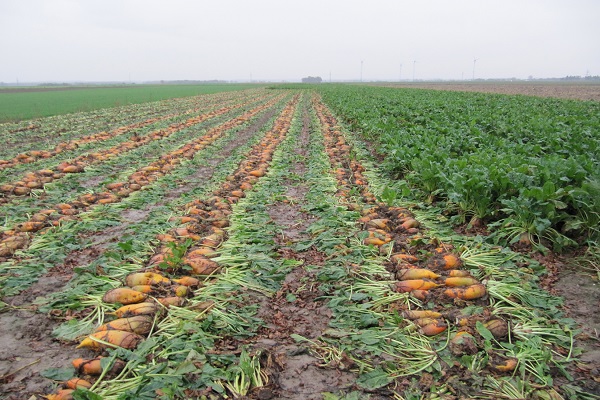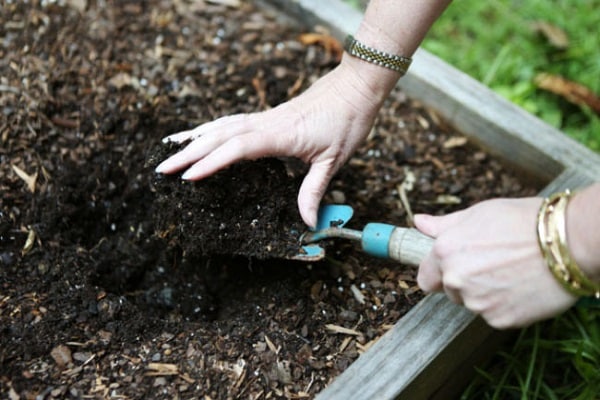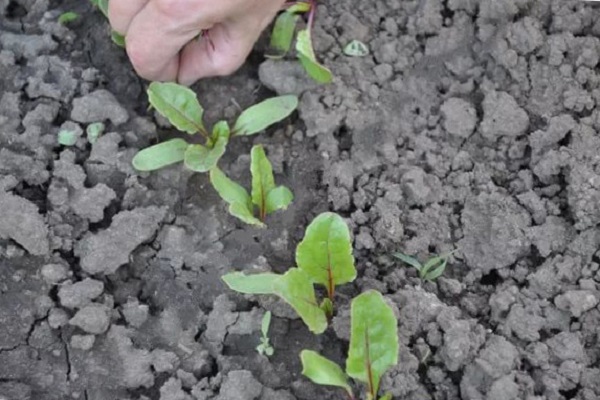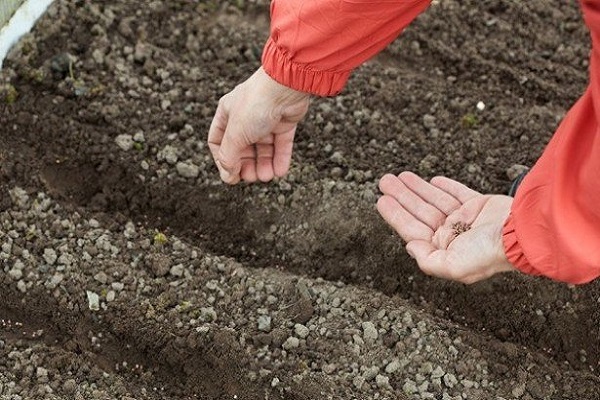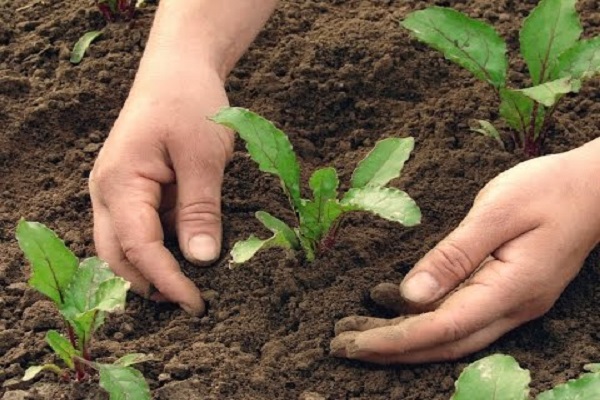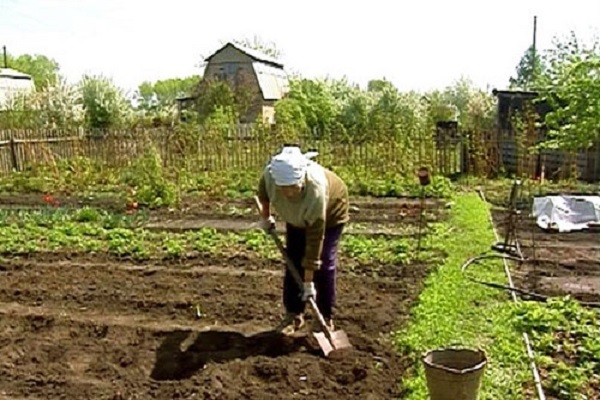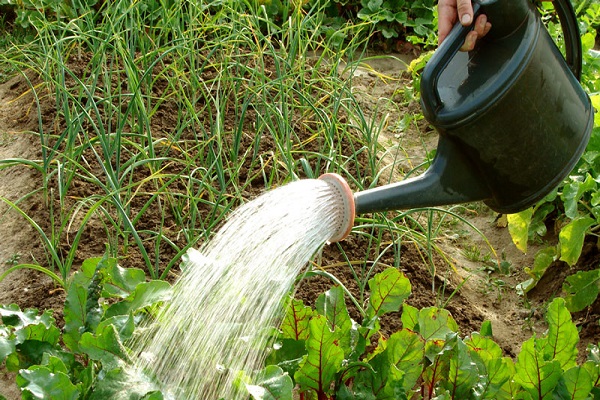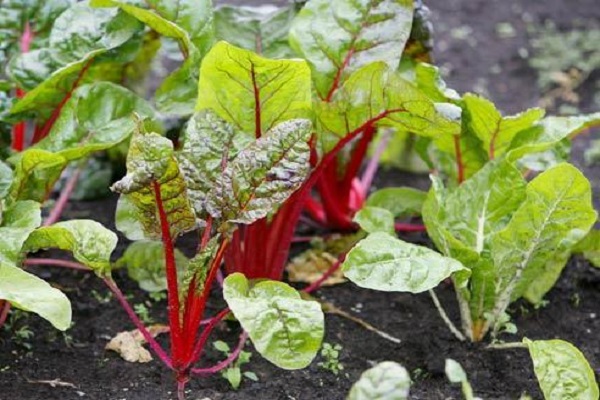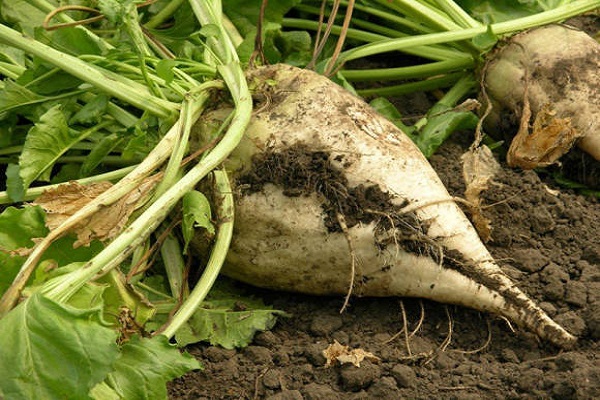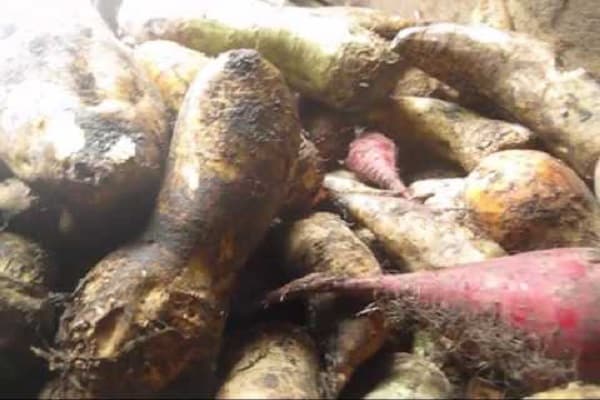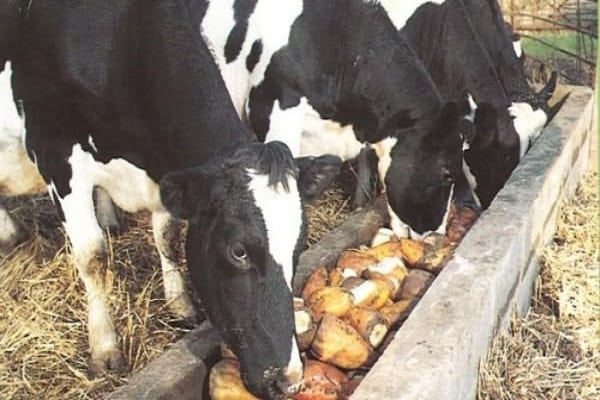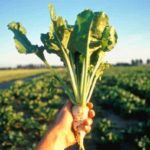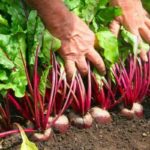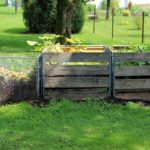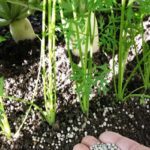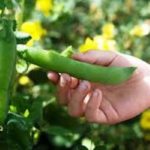Fodder beet occupies a leading position in cultivation in households and on an industrial scale. The root vegetable is an essential food for dairy cattle, pigs, rabbits and horses in winter. The culture is rich in fiber, pectin, carbohydrates, mineral salts and protein.
Features of the crop and the difference between fodder beet and sugar beet
Fodder beets and sugar beets are similar in appearance. Distinguishing one from the other can be difficult.
The main difference between the 2 crops is the sugar and protein content, which affect the scope of application. Sugar beets are rich in sucrose, which is washed out of the cake, bleached and crystallized, and feed, thanks to protein, can create a complete diet for the animal.
External differences are as follows:
- The stern has a slightly reddish or orange tint, round or oval shape, thick ovoid glossy tops of 35-40 leaves. During growth, the root crop begins to stretch upward and sticks out of the ground.
- Sugar can be white or beige, elongated. The plant has long green tops of 50-60 smooth leaves on a long stalk. The fruit is completely hidden underground.
- The methods of planting and growing the two crops also differ: the difference is that sugar beets have short roots, while fodder beets stretch deep into the soil in search of moisture, so the root can reach 3 m. Therefore, the crop can grow even in arid regions of the country without active additional watering.
Crop varieties
There are many varieties of fodder beets, each of which has its own characteristics and requirements for growing conditions. The most common ones
- Eckendorf yellow fodder beet has a cylindrical shape, protruding a third from the ground, white juicy pulp. The growth period of the culture is 140-155 days. The variety tolerates low temperatures well, is undemanding to soil, and is an excellent feed for cattle, as it helps increase milk productivity.
- The Centaur variety belongs to the semi-sugar type, has white, elongated oval fruits weighing 1.2-2.7 kg, with a shallow root furrow. The plant is undemanding to moisture and soil composition. The root crop sticks out from the ground by 40%, which greatly facilitates the assembly process.The growing season of the Centaur variety is 145 days.
- Hybrid beet varieties Ursus belong to the semi-sugar multi-sprout type. The plant has a yellow-orange cylindrical root, weighing up to 6 kg, more than half sticking out of the ground. Ursus beets are able to grow quickly even in dry and unfertilized soil. The growing season is 145 days.
- The Record variety is a multi-sprout, semi-sugar plant. It belongs to the middle late cultures. Beetroot has cylindrical-conical pink fruits, weighing up to 6 kg and 40% submerged. The variety is resistant to diseases and preserves well. The growing season of the plant is 145 days.
- The Kiev pink beet variety is classified as a multi-sprout, mid-season type. The crop has cylindrical-oval fruits of orange color with a small shallow root furrow, half immersed in the soil. Beetroot has a high yield. It tolerates drought well and is resistant to pests and diseases.
- Buryak Brigadir is distinguished by oval-cylindrical smooth shiny fruits of orange-green color, weighing up to 3 kg, with a high sugar content. The variety is drought-resistant and undemanding to soil composition. The growing season is 120 days.
- Lada is a single-sprout variety of fodder beet with a white or pinkish-white oval-cylindrical root crop with a pointed base. Its weight can reach 25 kg. Immersion of root crops is 40-50%. The plant is resistant to drought and disease and stores well. The tops remain juicy and green until harvesting, which is important if they are used as raw materials.
- Buryak Nadezhda has a single-sprouted seed; the hybrid variety is grown in the conditions of the North-Western, Middle Volga and Far Eastern regions. The oval-cylindrical red fruit has a depth of 40%.Characterized by high productivity.
- The Milana variety belongs to the single-germ, semi-sugar type. Beets grow quickly in the initial stages, have oval-shaped fruits, white below and green above, with a submergence of 60-65%. The plant is characterized by long-term storage, resistance to disease and color.
- Fodder beet Vermont is a hybrid variety of single-seeded type. The root vegetable is medium-sized, cylindrical-conical, yellow-orange in color.
- Jamon is a single-seeded variety with a cylindrical-conical root crop that is yellow-orange in color at the bottom and orange at the top. It is characterized by average resistance to cercosporiosis. The root eater is not interested.
- Starmon has a cone-shaped root, yellow underneath and green on top. The variety prefers loamy, sandy, fertile soils.
Growing process
Although the fodder crop is an unpretentious plant, there are a number of rules, the observance of which will lead to maximum crop yield. It is important what soil is sown in, at what depth the seeds are placed, in what number the beets grow and when is the best time to fertilize them.
Soil preparation
Before sowing, it is necessary to properly prepare the soil, based on what type it is and what previously grew on it. Growing fodder beets on an agricultural plot that has not been used for several years requires first getting rid of weeds.
If the soil in the field is black soil, loam or sandy loam, no additional fertilizing is required. In other cases, cultivating personal plots involves fertilizing in the fall, while plowing the land.To do this, compost is added to the soil in an amount of 35 tons per 1 hectare with the addition of 5 quintals of wood ash.
Immediately before sowing, the field is plowed again and nitroammophoska is added in an amount of 15 g per 1 m².
Weed control
Weed control is not limited to just weeding rows in the early stages of the growing season. Treatment with special means is mandatory in order to make the area as clean as possible. This will greatly facilitate the care of fodder beets and increase productivity.
If perennial weeds grow in the area that is used for sowing, treatment with continuous herbicides such as Hurricane, Buran, and Roundup is carried out in advance in the fall.
Sowing
The growing season of fodder beet is 125-150 days, so the seeds must be planted in early spring, preferably in the second half of March, when the soil has warmed up sufficiently.
The beet crop is sown in pre-made furrows along the entire length of the plot, at a distance of at least 60 cm from each other. Next, you need to determine in what quantity and how to plant the seeds; planting most varieties requires 12-15 g of seeds per 1 linear meter (150 g per hundred square meters). The sowing depth is 3 cm at intervals of 25 cm. At the end of the furrow the furrow is covered with soil.
Crop care: agricultural technology
First of all, caring for crops includes high-quality watering, the result of which is the preservation of green and juicy tops for as long as possible.
If the soil temperature is unstable, a crust may form before emergence, which should be broken up with a rotary hoe, moving the machine across the rows or at an angle of 30-40°.After the first shoots appear, the first row spacing is loosened to a depth of 5 cm.
When the first pairs of true leaves begin to form, excess shoots are removed using a cultivator and a row thinner.
Immediately after breaking through the rows, the rows are loosened to a depth of 6 cm, repeating the procedure as necessary until the tops close.
Fertilizers
In order to get a large harvest, it is necessary to feed beets (how to feed fodder beets depends on the type of soil and its composition). There are a number of fertilizers that can be fertilized as follows:
- The nitrogen preparation is applied in an amount of 120-150 kg/ha. It should be applied for the first time during pre-sowing tillage.
- Phosphorus and potassium are added during plowing of the site in the fall in the amount of 90-120 kg/ha, before sowing seeds - 150-200 kg/ha.
- Boron fertilizers are applied separately or as part of complex fertilizing using the foliar application method for beets, when 3-4 true leaves have developed on the bushes, in an amount of 180-200 kg/ha.
Protection of culture
There are many pests and diseases that affect beet fruits and tops. They are not dangerous for the animal when feeding, but can affect the entire field and destroy crops and mature plants.
During the designated growth periods, beets are examined, carefully examining the leaves and fruits. If lesions are detected, it is treated with special preparations.
Harvesting
Even a good harvest of fodder beet can be lost if it is not collected in time, before the temperature reaches +7 °C. This often happens at the end of September - beginning of October.
Depending on the area of the site, collection is carried out manually or using machinery. A special harvester or a simple potato digger will do.
Storage
The feed crop is stored in special storage facilities, which are equipped with a ventilation system and maintaining a stable temperature of +1...+2 °C.
On personal plots, piles are organized 3 m wide, 1.5 m high, 25-30 m long. They are covered with straw and earth on top. The cover layer must be at least 60 cm thick.
Feeding cows
Before giving beets to cows, they are steamed or boiled and allowed to cool. You cannot store raw materials after heat treatment. Already after 5 hours, it begins to release poisons that are dangerous to the health of livestock, the concentration of which reaches a maximum after 22 hours.

